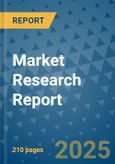The market is poised for rapid expansion, driven by the increasing adoption of connected cars and the extensive data generated by IoT devices such as sensors, GPS, and infotainment systems. Automakers are leveraging predictive analytics to anticipate component failures, optimize performance, and offer tailored services. The growing deployment of 5G-based telematics and Vehicle-to-Everything (V2X) communication further accelerates predictive opportunities, fueling widespread adoption across original equipment manufacturers (OEMs), fleet operators, and aftermarket service providers. Predictive analytics help in preventing unexpected vehicle breakdowns, providing real-time insights into vehicle health and performance, thereby reducing costs and extending the lifecycle of fleet assets. Additionally, the increasing popularity of predictive maintenance software for both passenger and commercial vehicles is a key growth driver for the market worldwide.
The hardware segment held a 56% share in 2024 and is expected to grow at a CAGR of 23.5% between 2025 and 2034. Sensors such as LiDAR, radar, cameras, and telematics systems are fundamental to predictive analytics, offering real-time data on vehicle behavior, driver habits, and environmental conditions. As safety requirements increase and the adoption of advanced driver-assistance systems (ADAS) rises, demand for these hardware components will continue to soar.
The passenger vehicle segment held a 74% share in 2024. OEMs are increasingly focusing on delivering personalized features, including infotainment recommendations and predictive maintenance alerts. By analyzing data such as driving habits, weather, and historical vehicle usage, automakers can offer customized services that enhance customer satisfaction, improve brand loyalty, and promote data-driven ownership experiences.
U.S. Automotive Predictive Analytics Market held 89% share and was valued at USD 525.9 million in 2024. The U.S. leads the global autonomous vehicle research and development (R&D) sector, with significant contributions from Silicon Valley, Detroit, and numerous tech-OEM partnerships. These innovations rely heavily on predictive analytics to enable accident avoidance, real-time decision-making, and traffic forecasting.
Leading companies in the Global Automotive Predictive Analytics Market include Bosch, Continental, IBM, Microsoft, NXP, Oracle, PTC, SAP, SAS, and ZF. These market players are driving innovation and market expansion through a variety of strategies, such as mergers and acquisitions, partnerships, and the development of new products. These approaches help companies stay competitive, enhance their technological capabilities, and meet the growing demand for advanced predictive solutions in the automotive sector. Key strategies employed by companies to strengthen their position in the automotive predictive analytics market include forming strategic partnerships and mergers with other industry leaders to leverage shared technologies and expand their reach. These companies are also heavily investing in the development of next-generation solutions, such as advanced sensors, real-time analytics software, and cloud-based platforms, to enhance the predictive capabilities of their offerings.
Comprehensive Market Analysis and Forecast
- Industry trends, key growth drivers, challenges, future opportunities, and regulatory landscape
- Competitive landscape with Porter’s Five Forces and PESTEL analysis
- Market size, segmentation, and regional forecasts
- In-depth company profiles, business strategies, financial insights, and SWOT analysis
This product will be delivered within 2-4 business days.
Table of Contents
Companies Mentioned
The companies profiled in this Automotive Predictive Analytics market report include:- AWS
- Bosch
- IBM
- Intel
- Microsoft
- Nvidia
- Oracle
- Qualcomm
- SAP
- Regional Champions
- Continental
- Denso
- Hitachi
- John Deere
- Komatsu
- Liebherr
- Mitsubishi
- NXP
- Volvo
- ZF
- Fleet Complete
- Geotab
- Masternaut
- Mix Telematics
- Omnitracs
- PTC
- SAS
- Teletrac
- Trimble
- XCMG








